Authors of the top accepted contributed papers that describe medical devices with commercial potential will be giving five minute pitches to a panel of leading medical technology innovators. The top three presentations will be chosen to win one of three cash prizes.
The Judge's Panel will base their decision upon four factors:
1) Quality of clinical need statement (problem)
2) Technical soundness of research (solution)
3) Presentation Quality
4) Fundability
Winners will be announced during lunch following the competition on Wednesday.
Development and Testing of a Multifunction Gastric Feeding Tube Capable of Vital Sign Monitoring (Grand Prize Winner)
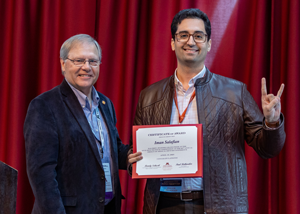
Presenting Author: Iman Salafian, University of Texas at Austin
Authors: Iman Salafian, Angie Englert, Allissa Morris, Alan Groves and Chris Rylannder
Towards the Development of a Wearable Device to Manage Upper Extremity Lymphedema (2nd Place Winner)

Abstract: 3 to 5 million Americans are affected by lymphedema and 140 to 200 million patients worldwide [1,2]. The chronic, progressive condition is only treatable, but not curable, leaving patients with debilitating symptoms that can significantly impair their quality of life [3]. Treatments include manual lymphatic drainage (MLD) massage and compression garments, often applied sequentially. MLD is limited by consistent access to a qualified lymphedema therapist. Our wearable device utilizes vibration to mimic the patterns of massage in MLD. The long-term goal is to enable at-home maintenance therapy between MLD sessions and improve the overall management of lymphedema. Acceleration, frequency, and sound levels of our motors were tested and compared to current clinical solutions. Acceleration testing was conducted by placing an accelerometer in a tissue model at varying distances to collect acceleration data at different duty cycles. Frequency data was calculated in MATLAB using FFT. Acceleration, sound frequency, and sound level of our motors were all within a close range of the values collected from clinical tools. The acceleration frequency of the motors rose slightly with an increased duty cycle, but did not exceed the smaller clinical tool frequency values. Based on our testing, the motors used in our device are comparable to clinical tools currently used by certified lymphedema therapists.
Co-Authors: Leah Thomas, Seth Jarvis, Laura Wenger, Tara Newberry, Andre Muelenaer and Christopher Arena

Leah Thomas
Virginia Tech
Bio: Leah Thomas is a biomedical engineer and self-taught designer passionate about improving medical technology with a user-centric approach. She earned her B.S. in Biomedical Engineering from Virginia Tech in 2022 and is currently a Rotational Design Engineer at Stryker Instruments. Leah brings together the worlds of design and engineering to solve problems creatively, with a focus on patient education and accessibility. She is dedicated to promoting diversity in STEM and fostering creativity to drive innovation.
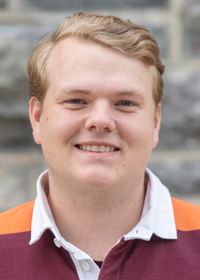
Seth Jarvis
Virginia Tech
Bio: Seth Jarvis is a fourth year undergraduate student at Virginia Tech majoring in biomedical engineering. During his undergraduate career, he has focused on the development of novel wearable medical devices, and has discovered a passion for medicine and advocacy for medically underserved patient populations.

Laura Wenger
Virginia Tech
Bio: Laura Wenger is an undergraduate senior studying biomedical engineering at Virginia Tech. Her areas of interest are medical device development and biomechanics. She has been involved with Lymphavibe since its inception two years ago, and was named an inventor on this project.
UmbreLAA: Design of a Variable-Sized Left Atrial Appendage Occlusion Device for Stroke Prevention (3rd Place Winner)
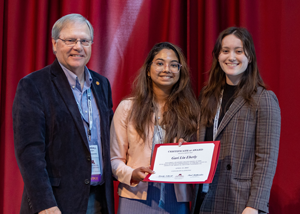
Gari Liu Eberly
Harvard University, Massachusetts Institute of Technology
Abstract: Blood clots originating in the left atrial appendage (LAA) are the leading cause of ischemic stroke in patients with nonvalvular atrial fibrillation (AF). Complications from and contraindications to oral anticoagulants (OACs), in addition to the recent successes of endocardial LAA closure devices, have driven increased interest in mechanical LAA occlusion. However, current devices are limited in their abilities to accommodate diverse LAA anatomies, motivating the development of a novel endocardial LAA occlusion plug that supports more anatomical variability. We present the design of an in-situ expandable plug as well as an accompanying pacifier module for LAA occlusion. The final design accommodates LAA diameter ranges of 14 millimeters for each device size (10-24mm and 24-38mm), double that of any approved device. This adaptability can help to overcome imperfect pre-procedural imaging and suboptimal device fit. Benchtop tug and leak tests demonstrate the stability and sealing capacities of the design.
Bio: Gari is a PhD student in the Harvard-MIT department of Health Sciences and Technology, where she is pursing a degree in Medical Engineering and Medical Physics.
Co-Authors: Madison Reddie, Gari Eberly, Aviva Jesse Levi, Diego Quevedo-Moreno, Keegan Mendez and Ellen T. Roche
Design, Implementation and Evaluation of a Smart Toothbrush for Individuals with Dementia

Zahra Moussavi
University of Manitoba
Abstract: Dementia in general and Alzheimer's Disease in particular, is one of the most challenging health conditions in our century. Experiencing cognitive decline, resulting in relying on others for daily living activities and impairment in basic mental tasks are the main symptoms. There are yet no proven treatments to slow or prevent neurodegenerative dementia progression; thus, dementia patients eventually need full-time care. To help patients to stay in their own homes longer and ease the caregiver burden, Smart Assistive Technology (SAT) products may be beneficial. One of the basic activities that Alzheimer’s patients in particular need help with, are basic hygiene needs such as brushing their teeth. A smart toothbrush has been designed and implemented as a pilot study towards development of a SAT for basic hygiene functions of dementia patients, while it can also have educational application for children. The design includes hardware and software. The hardware includes 9-Axis motion sensor, individually addressable light-emitting diodes (LEDs), Bluetooth Light Energy (BLE) communication module, laser distance sensor and other electrical components. The software includes real- time monitoring of several dependent and independent tasks using an algorithm to assist the users and transmit that data to a smartphone application. The real-time monitoring system of the designed prototype assists the users by visual and auditory means. It is anticipated the designed prototype will assist people with dementia, and hopefully prolong the time they can be cared for at home; it may also be used for oral hygiene education and instruction in general.
Bio: Zahra Moussavi is a professor, a Canada Research Chair, and the founder and former director of Biomedical Engineering Graduate Program at University of Manitoba. Her current research focuses are on medical devices instrumentation and signal analysis for sleep apnea management and Alzheimer’s diagnosis and treatment using virtual reality, rTMS and EVestG technologies. She is the recipient of several awards including the “2018 Technical Excellence Award,” Engineers Geoscientists Manitoba, Oct. 2018, “Canada’s Most Powerful Women (Top 100)”, “Manitoba Distinguished Women” in 2014 and IEEE EMBS Distinguished Lecturer, 2014 and 2019. She has published more than 310 peer-reviewed papers in journals and conferences, and has given >120 invited talks/seminars including 2 Tedx Talks and 9 keynote speaker seminars at national and international conferences and also public talks. Aside from academic work, on her spare time, she writes science articles for public; also, has developed and offered memory fitness programs for aging population.
Co-Authors: Mohammad E. Shakeri Jannati, Sarah O'Byrne and Zahra Moussavi
Design of a Custom Sensing and Actuating Cushion for use in Pressure Relief in Wheelchair Users

Lucy Cinnamon
The University of Illinois at Urbana-Champaign
Abstract: Pressure sores impact a wide range of individuals including wheelchair users. Solutions to address pressure sore prevention are limited. This work is aimed at developing devices to prevent pressure sores in wheelchair users with limited mobility or sensation. Informed by stakeholder input, we present a dynamic cushion design to sense areas of high pressure and actuate to relieve that pressure. We experimented using resistive sensors in a grid formation to map pressure across the seat. To relieve pressure, we propose a grid of custom pneumatic bladders to inflate in response to sensor thresholds. Bladders will inflate to redistribute pressure. After experimenting with a variety of possible bladder geometries, we selected torus-shaped actuators to optimize durability, stability, and increase breathability in the final design. Given the ability to fabricate custom bladders and program controls, the proposed device can be tailored to users’ specific needs. While static cushion solutions exist on the market, our custom design allows users to dynamically alleviate pressure eliminated the need to constantly readjust position and ultimately reduce time spent treating sores.
Bio: Lucy Cinnamon is an undergraduate student at the University of Illinois majoring in bioengineering with a concentration in biomechanics. She has been a member of a soft robotics lab under the direction of Dr. Holly Golecki for the past two semesters. In her spare time, she plays clarinet in the Marching Illini.
Co-Authors: Jason Robinson, Vishakh Shewalker, Isaiah Rigo, Asaiah Rock, Lucy Cinnamon, Daniella Chapman-Rienstra, Jooyoung Hong, Joohyung Kim and Holly Golecki
A Reconfigurable, Additively Manufactured Vibrotactile Stimulation Device for Chronic Pain
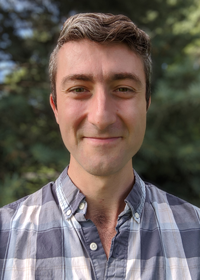
Josh Adams
Saint Louis University
Abstract: This paper presents an experimental chronic pain rehabilitation therapy utilizing vibration-based stimulation of the hand, wrist and lower arm, which has shown promise in reducing pain ratings in chronic pain patients (n=5) over a six-week treatment period. Based on the clinical need and practical use discoveries of that first trial, this paper outlines the development of a second-generation device that activates specific nerves through vibrotactile stimulation applied to the skin. Several major steps in this process were the iterative design process, physical prototyping, conceptual modeling, and benchtop testing. Furthermore, this next generation device was tested with epilepsy patients undergoing invasive monitoring (stereotactic electroencephalography, sEEG) to collect electrophysiological measurements via implanted electrodes in the brain. Early findings showed differential modulation of delta power in response to 2 Hz median nerve stimulation, but not during 12 Hz median nerve stimulation or 2 Hz ulnar nerve stimulation, hence indicating differential encoding of vibration features depending on frequency and spatial parameters. These patient trials also served to collect feedback for the continued development of the device to improve aspects such as ease of use, patient comfort, and ideal application of the vibration stimulus. Testing and development are ongoing with the enhancement of vibration isolating structures, more comfortable contact points, more durable additively manufactured structures, and embedded force sensors in the device.
Bio: Josh Adams will be graduating next month with his Masters degree in Biomedical Engineering from Saint Louis University. Since 2018 he has also served as the owner and principal engineer of Prototyping Tech, a prototyping business primarily providing cast silicone test fixtures and additively manufactured production parts to medical device manufacturers.
Authors: Josh Adams, Phillip Demarest, Kara Donovan, Peter Brunner, Harold Burton, Simon Haroutounian, Eric Leuthardt and Jenna Gorlewicz
On the Design of a Novel Phonoenterogram Sensing Device using AI Assisted Computer-Aided Auscultation
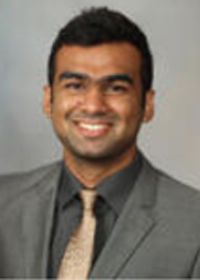
Shivam Damani
Mayo Clinic
Abstract: Bowel sounds have been previously used to study intestinal motility and overall digestive health in various clinical settings. However, the blurred definition of bowel sounds and their subtypes, limited resources for interpretation, poor sensitivity, and low positive predictive value led to their restricted utility. Recent advances in artificial intelligence and machine learning have steered interest in developing unique tools using the phonoenterogram to analyze diverse bowel sounds. In our study, bowel sounds were recorded from eight healthy volunteers using the Eko Duo stethoscope. A novel deep-learning algorithm was designed to classify the recordings into baseline or prominent bowel sounds. A total of 11,210 data points (5,605 balanced sounds) were used to train and test the model to yield an accuracy of 0.895, a precision of 0.890, and a recall of 0.854 reflecting successful segregation of these sounds into respective groups. More extensive studies enrolling healthy and diseased subjects with a device specifically tailored to record bowel sounds are needed to generalize these results and determine their application in the patient population.
Bio: Shivam is an Associate Data Scientist in the Department of Medicine at Mayo Clinic. His research interests are medical devices in the GI space.
Co-Authors: Shivam Damani, Devanshi Damani, Renisha Redij, Arshia Sethi, Pratyusha Muddaloor, Anoushka Kapoor, Anjali Rajagopal, Keerthy Gopalakrishnan, Xiao Wang, Victor Chedid, Alexander Ryu, Christopher Aakre and Shivaram Arunachalam
StethAid: An Electronic Stethoscope Connected to iOS Mobile Apps for AI-Assisted Auscultation
Authors: Youness Arjoune, Tyler Salvador, Trong Nguyen, Anha Telluri, Titus John, Jonathan Schroder, Dinesh Pillai, Stephen Teach, Shilpa Patel, Robin Doroshow and Raj Shekhar
Design of a Wearable Ultrasound Patch with Soft and Conformal Matching Layers

Ethan Krings
University of Nebraska-Lincoln
Abstract: Ultrasound is a safe, noninvasive diagnostic technique used to measure internal structures such as blood vessels and the velocity of blood flow in the human body. The ability to continuously measure blood flow in major cerebral arteries would enable the early detection of medical problems such as stroke. However, current ultrasound technology consists of rigid, hand-held probes that are arduous to use, sensitive to movement, and are primarily designed for intermittent, instead of continuous use. Here, we describe the design of a wearable ultrasound patch for continuously measuring blood flow velocity through the middle cerebral artery (MCA) that can be assessed from the temple region of the head. The wearable ultrasound patch is composed of an array of piezoelectric elements that are wired together using flexible electrical conductors and encapsulated in an elastic substrate. To improve ultrasound energy transfer, a soft and conformal composite matching layer is introduced. The matching layer consists of gallium-based liquid metal (LM) microdroplets dispersed in a silicone elastomer. The acoustic impedance of the matching layer can be tuned by varying the volume loading of LM. The wearable ultrasound patch will provide new opportunities to continuously measure blood flow velocity and ultimately enable early detection of medical problems such as stroke.
Bio: Ethan Krings is a PhD student at the University of Nebraska-Lincoln (UNL) studying Mechanical Engineering and Applied Mechanics. He is a research assistant in the Smart Materials and Robotics Laboratory at UNL where his research focuses on creating new soft multifunctional composites for use in stretchable electronics, wearable computing, and on-body thermal management.
Co-Authors: Ethan Krings, Sequoia Truong, Kiersten Resser, Benjamin Hage, Gregory Bashford and Eric Markvicka
Expert Panel of Judges
Co-Chairs: Paul Rothweiler, Bakken Medical Devices Center
Randy Schiestl, Boston Scientific
Judges
Daniel Mooradian, University of Minnesota
Danny Sachs, Bakken Medical Devices Center
Dawn Bardot, Abiomed
Del Lawson, 3M
Eric Little, Schwegman, Lundberg & Woessner
Kate Taylor, Boston Scientific
Marge Hartfel, Bakken Medical Devices Center
Tim Tripp, Be The Match BioTherapies
Mike Hess, Medtronic